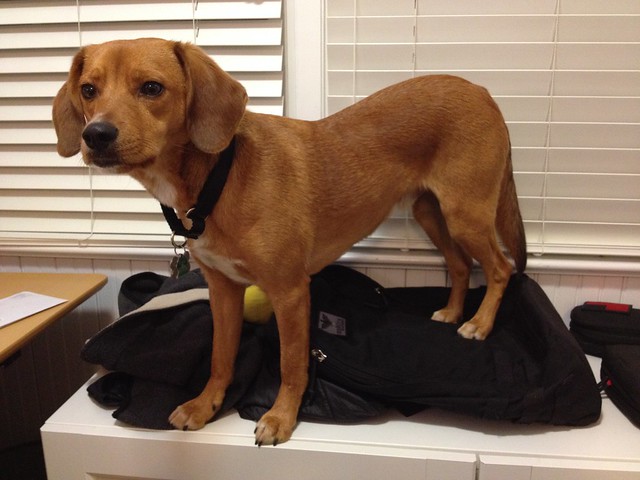Anti-pull dog harnesses
I like dogs and recently got a beaglish one of my own from the Lost Dog Foundation. While wonderful, he has the affliction of walking excitement common to hunting hounds—appropriate to his name, Scout wants to lead the way and suss out any squirrels to be found. At only 25 pounds, he won’t drag you down the street, but the constant tugging on the leash is tiring. I’ve tried a number of collars & harnesses to try to combat this problem, and what follows are my opinions on them.
Illusion Collar
My girlfriend had been watching a lot of Caesar Millan before we got our dog and we put a fair bit of stock in his methods. Using a leash in the way that Caesar describes, well up the dog’s neck and close to the ears, allowed us to control Scout, but the leash wouldn’t stay there, so we figured it was worth trying the oddly-named[^1] Illusion Collar to make this easier.
While the Illusion collar does what it’s supposed to, keeping the operative part of the collar well up the dog’s neck for better control, this did nothing for Scout and he remaiined unruly on walks.
PetSafe Easy Walk Harness
I’ve found this harness to be by far the most effective. The harness has a circle of straps around the dog’s body, just behind their shoulders and a strap across the dog’s chest. The front strap has a cinching portion to which the leash clips, tightening a bit when the dog pulls. More importantly, because the attachment is on the dog’s chest, the force of any pulling turns them sideways, greatly limiting thier ability to pull.
The downside to the Easy Walk is that the strap behind the dog’s front legs can rub their fur-less armpits raw, as I’ve found with Scout and other friends have reported.
Freedom No-Pull Harness
This is set up similarly to the PetSafe Easy Walk mentioned above, but with additional versatility. Like the PetSafe it has an attachment point on the dog’s chest, with all of the noted advantages & disadvantages, though the front attachment on the Freedom No-Pull isn’t cinching. Where it does have a cinching attachment point is on the dog’s back between their shoulder blades. Using this attachment doesn’t provide nearly the pulling prevention of the front attachment, but it does keep from driving the underbody strap into the dog’s armpits and chafing them.
The intended arrangement is to clip a leash into both attachments and use it like a horse’s reins—tug on the front one when the dog pulls to correct the behavior. This is effective, but it does halve the length of your leash.
[^1]: The Illusion collar is named after his estranged wife Ilusión
